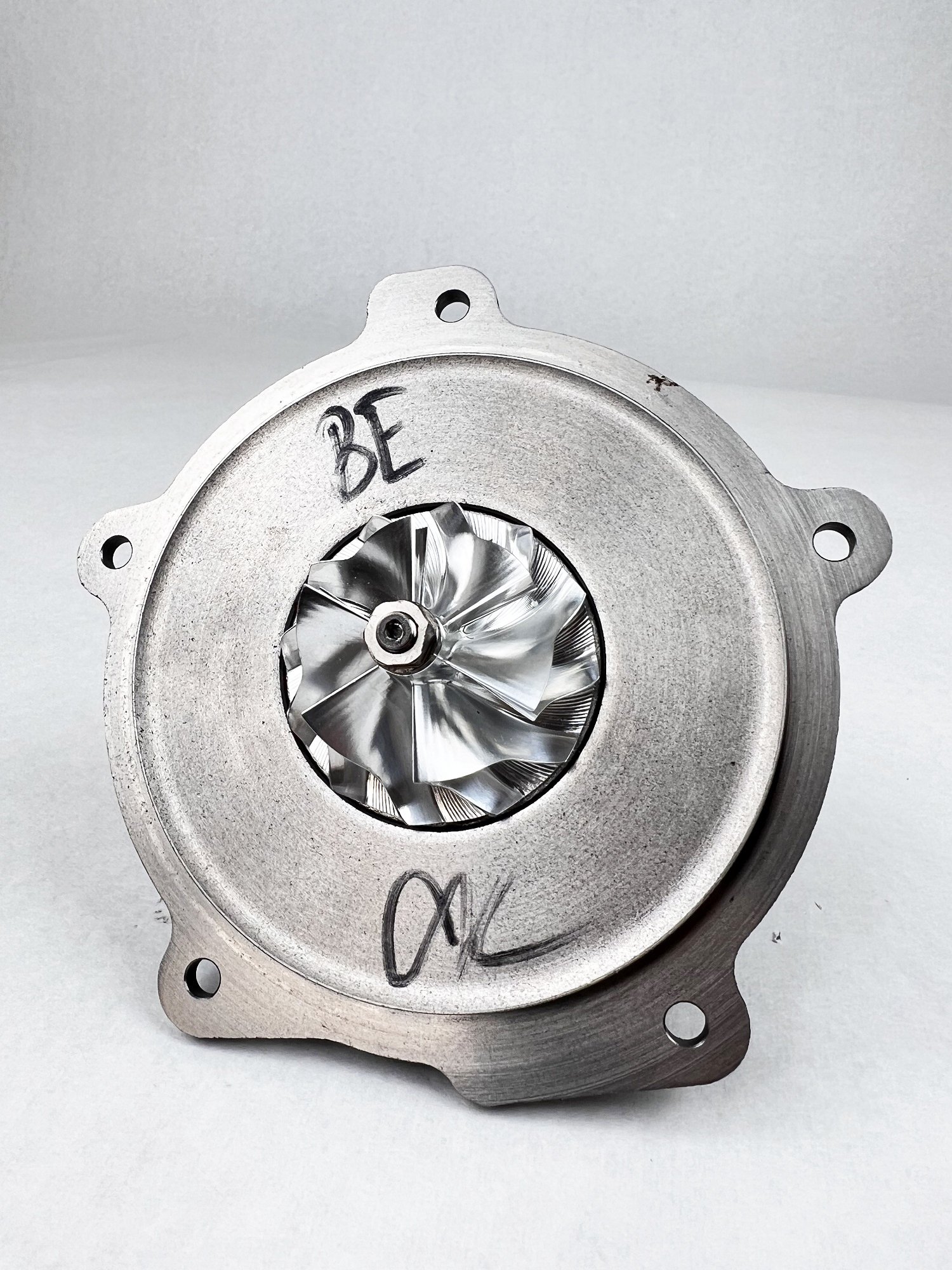11th Gen Honda Civic Turbocharger Design Blog Pt 3. - Wheel Selection
Welcome to part 3 of our 11th-gen Kuro turbocharger design blog. In our last blog (part 2) we went over the material options for the new turbo and went into detail about why we selected particular metals for the wheels and housings. In this blog, we are going to take a more in-depth look at the compressor and turbine wheels and share with you the sizes we selected and why.
Before we dive into the wheel sizes let's first take a look at the diagram below to familiarize ourselves with some vocabulary. We have the compressor wheel which is on the intake side of the engine. That is the wheel that compresses the outside ambient air. Then we have the turbine wheel which is on the exhaust side of the turbo and sees the really hot exhaust gasses. Each wheel has what’s known as an inducer side and an exducer side and they direct the flow of gasses in and out of the turbocharger as in the picture below.
Let's first dig into the compressor wheel. The OEM compressor wheel is not a bad piece. It’s made well and looks high quality. It is a billet aluminum piece which is an upgrade from the cast aluminum wheel that was OEM in the 10th gen. It uses a 6x6 blade configuration which means it has 12 blade tips on it; 6 alternating tall ones and short ones. This 6x6 configuration is similar to the setup on the 10th gen OE turbo and to our W1 turbo for the 2016-2021 Civic. It is a good setup and spools very fast because the little blades can start moving air sooner than the big blades can. It's a bit of a compounding effect as the little wheels “get it started” while the big wheels help once the compressor side is already moving. Remember from our last blog that the OE compressor wheel has a 36.3mm inducer and a 47.7mm exducer. In the world of turbochargers, this is pretty small.
Compressor Wheel Selection
Now there are many ways to make power with aftermarket turbochargers, but by far the simplest and most straightforward way is to make this wheel bigger. So that is where we started. Our 11th gen Kuro turbo will likely utilize a 47mm inducer and a 58mm exducer on the compressor wheel. That is a 30% increase in size on the inducer and a 21% increase on the exducer. The logic here is very simple: a bigger blade size means we can move more air to make more power. The next consideration is blade configuration. The more blades you have the more surface area you have for air to spool up the turbo. However more blades mean less physical room for air so you can’t flow as much on the top end. For Kuro, we have opted for an 11-blade setup. The one less blade helps move more air for more power. The wheel is large and the 11-blades are all the same height so there will be a penalty in spool characteristics. If we find the trade-off on top-end power to spool (responsiveness) out of balance, we’ll adjust. To better get the best of both worlds (responsiveness and top-end power) we keep a lightweight billet aluminum design and use point-milled machining so that we can create a profile that improves the spool. We also did some tuning on the exhaust side to improve the spool. More on that later.
Turbine Wheel Selection
On the turbine side, the tiny OEM wheel has 9 blades. This small wheel spools up very fast which is what makes your 11th gen turbo Honda feel a bit like a naturally aspirated car since turbo lag is almost non-existent. But again that trade-off is the tiny turbo really loses steam up top. Basically, after 5000rpm this little engine falls flat on its face. But it's okay because we are fixing that!
Looking at our upcoming Kuro we upped our game big time. We are looking at a 46.5mm inducer and a 41mm exducer on the turbine side. That is a 10% and 20% increase respectively. You will notice that the jump in size is not as big of a change as it was on the compressor and that is for good reason. We don’t want to make this turbo super lazy and spool really slow. We want to get more top end without too big a hit to the torque curve. We switched it up from an OE 9-blade configuration to an 11-blade. This helps spool.
After crunching the numbers and determining our goals we feel that this wheel setup has a place in our catalog. We will be sharing the results of recent dyno sessions and tuning here so you can see what kind of power we make.
Lastly! We have a question for you and we need your feedback. The total of the turbo switch from the 10th gen to the 11th gen was that Honda used a turbo that spools quicker. That responsiveness feels great at initial acceleration then loses steam. This classic trade-off is larger on the 11th gen than it was on the 10th. What is the perfect first turbo upgrade for your Civic? Should it be pretty responsive and give up some power up top, or would you prefer more turbo lag and a bigger boost in top-end power?
Co-Founder
-Vincent









